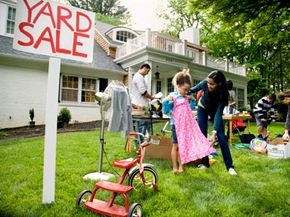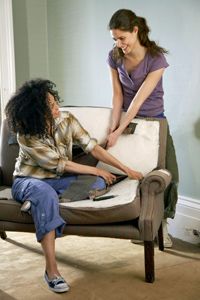Garage sales have become a great way to recycle used items and make a little cash. But what do you do when you're on the other end of the transaction? You've just driven past a great-looking garage sale spread out like a buffet across someone's driveway and front lawn, but how do you decide which items are gems and which ones are fodder for the nearest landfill? And after you've made your purchase, how do you rehabilitate your find to transform it from a found object into a useful show piece?
The prospect of finding inexpensive but functional stuff inspires hordes of people to spend their weekends hunting for and fixing up bargains, but the key to making a successful haul is in being able to actually use what you've carted home. That great office chair may only have three working casters, and the table you thought would look fab in the family room may not seem so appealing when you discover that the veneer is peeling off.
Advertisement
Salvaging furniture, fixtures and other objects from garage sales and second-hand stores may be less exciting than finding them in the first place, but rehabilitating them successfully is the first step in turning your finds into money savers or objets d'art.
In tough economic times, when you're furnishing your first place or even if you just enjoy the thrill of the hunt, garage sales offer an opportunity to find hidden treasure -- if you know the ropes. In the next few pages, we'll explore some of the challenges and rewards of salvaging garage sale finds. From dealing with superficial wear and tear to removing years of grime and neglect, a discriminating eye, some elbow grease and a few basic skills will take you a long way.
First up, let's take a look at some ways to get prepared for your garage sale excursion.
Advertisement


